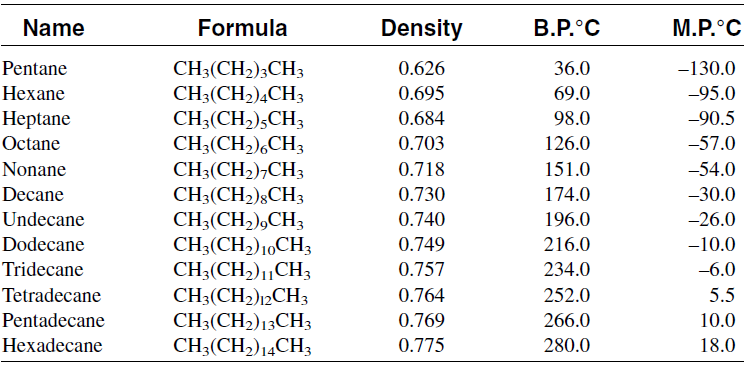


 علم الكيمياء
علم الكيمياء 
 الكيمياء التحليلية
الكيمياء التحليلية 
 الكيمياء الحياتية
الكيمياء الحياتية 
 الكيمياء العضوية
الكيمياء العضوية 
 الكيمياء الفيزيائية
الكيمياء الفيزيائية
 الكيمياء اللاعضوية
الكيمياء اللاعضوية 
 مواضيع اخرى في الكيمياء
مواضيع اخرى في الكيمياء
 الكيمياء الصناعية
الكيمياء الصناعية |
Read More
Date: 22-8-2017
Date: 13-2-2016
Date: 26-7-2017
|
CHEMICALS FROM HIGH MOLECULAR WEIGHT n-PARAFFINS
High molecular weight n-paraffins are obtained from different petroleum fractions through physical separation processes. Those in the range of C8-C14 are usually recovered from kerosines having a high ratio of these compounds. Vapor phase adsorption using molecular sieve 5A is used to achieve the separation. The n-paraffins are then desorbed by the action of ammonia. Continuous operation is possible by using two adsorption sieve columns, one bed on stream while the other bed is being desorbed. n- Paraffins could also be separated by forming an adduct with urea. For a paraffinic hydrocarbon to form an adduct under ambient temperature and atmospheric pressure, the compound must contain a long unbranched chain of at least six carbon atoms. Ease of adduct formation and adduct stability increases with increase of chain length. Table 1.1 shows some physical properties of C5-C16 n-paraffins. As with shorter-chain n-paraffins, the longer chain compounds are not highly reactive. However, they may be oxidized, chlorinated, dehydrogenated, sulfonated, and fermented under special conditions. The C9-C17 paraffins are used to produce olefins or monochlorinated paraffins for the production of detergents. The 1996 capacity for the U.S., Europe, and Japan was 3.0 billion pounds.
Table 1.1 : Selected properties of n-paraffins from C5-C16




|
|
|
|
التوتر والسرطان.. علماء يحذرون من "صلة خطيرة"
|
|
|
|
|
|
|
مرآة السيارة: مدى دقة عكسها للصورة الصحيحة
|
|
|
|
|
|
|
نحو شراكة وطنية متكاملة.. الأمين العام للعتبة الحسينية يبحث مع وكيل وزارة الخارجية آفاق التعاون المؤسسي
|
|
|